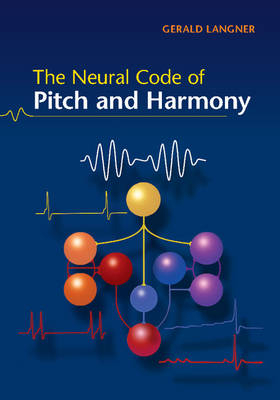
The Neural Code of Pitch and Harmony
Cambridge University Press (Verlag)
978-0-521-69701-9 (ISBN)
Harmony is an integral part of our auditory environment. Resonances characterised by harmonic frequency relationships are found throughout the natural world and harmonic sounds are essential elements of speech, communication and, of course, music. Providing neurophysiological data and theories that are suitable to explain the neural code of pitch and harmony, the author demonstrates that musical pitch is a temporal phenomenon and musical harmony is a mathematical necessity based on neuronal mechanisms. Moreover, he offers new evidence for the role of an auditory time constant for speech and music perception as well as for similar neuronal processing mechanisms of auditory and brain waves. Successfully relating current neurophysiological results to the ancient ideas of Pythagoras, this unique title will appeal to specialists in the fields of neurophysiology, neuroacoustics, linguistics, behavioural biology and musicology as well as to a broader audience interested in the neural basis of music perception.
Gerald Langner received a diploma in physics from the Technical University of Munich in 1971. He then worked at the Max-Plank-Institute in Göttingen and at the TU Darmstadt where he studied hearing in birds and electroreception in fish. In 1985, during a research stay in Canberra, Australia, he discovered – together with Henning Scheich – the electric sense in platypus. From 1988 to 2008 he was Professor of Neurobiology in Darmstadt with his research focus on spatial and temporal aspects of processing in the auditory system.
Preface; 1. Historical aspects of harmony; 2. Sound and periodicity; 3. The discovery of the missing fundamental; 4. The pitch puzzle; 5. The auditory time constant; 6. Pathways of hearing; 7. Periodicity coding in the brainstem; 8. Periodicity coding in the midbrain; 9. Theories of periodicity coding; 10. Periodotopy; 11. The neural basis of harmony; 12. The oscillating brain; References; Subject index.
| Mitarbeit |
Assistent: Christina Benson |
|---|---|
| Zusatzinfo | 52 Halftones, unspecified; 80 Line drawings, unspecified |
| Verlagsort | Cambridge |
| Sprache | englisch |
| Maße | 174 x 247 mm |
| Gewicht | 490 g |
| Themenwelt | Kunst / Musik / Theater ► Musik ► Musiktheorie / Musiklehre |
| Geisteswissenschaften ► Sprach- / Literaturwissenschaft ► Sprachwissenschaft | |
| Medizin / Pharmazie ► Medizinische Fachgebiete ► Neurologie | |
| Naturwissenschaften ► Biologie ► Humanbiologie | |
| Naturwissenschaften ► Biologie ► Zoologie | |
| ISBN-10 | 0-521-69701-8 / 0521697018 |
| ISBN-13 | 978-0-521-69701-9 / 9780521697019 |
| Zustand | Neuware |
| Informationen gemäß Produktsicherheitsverordnung (GPSR) | |
| Haben Sie eine Frage zum Produkt? |
aus dem Bereich


